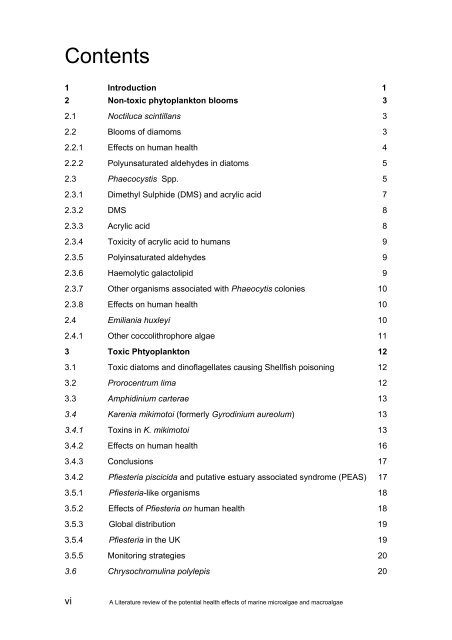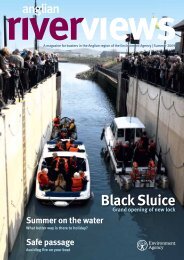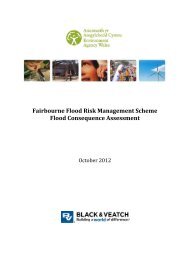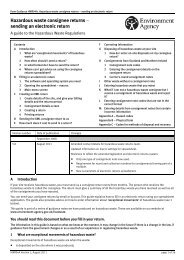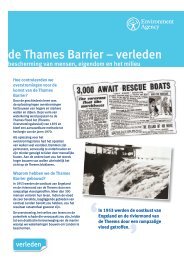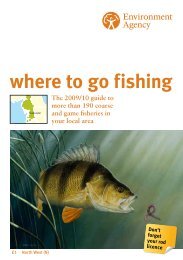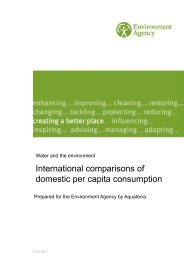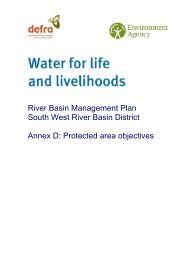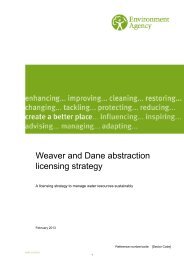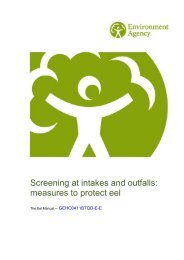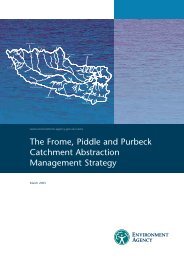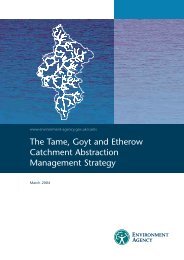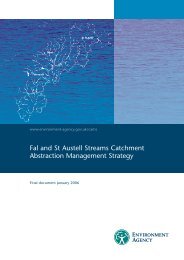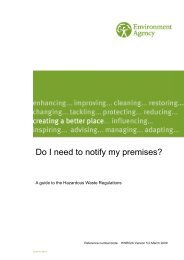Karenia mikimotoi
Karenia mikimotoi
Karenia mikimotoi
Create successful ePaper yourself
Turn your PDF publications into a flip-book with our unique Google optimized e-Paper software.
Contents<br />
1 Introduction 1<br />
2 Non-toxic phytoplankton blooms 3<br />
2.1 Noctiluca scintillans 3<br />
2.2 Blooms of diamoms 3<br />
2.2.1 Effects on human health 4<br />
2.2.2 Polyunsaturated aldehydes in diatoms 5<br />
2.3 Phaecocystis Spp. 5<br />
2.3.1 Dimethyl Sulphide (DMS) and acrylic acid 7<br />
2.3.2 DMS 8<br />
2.3.3 Acrylic acid 8<br />
2.3.4 Toxicity of acrylic acid to humans 9<br />
2.3.5 Polyinsaturated aldehydes 9<br />
2.3.6 Haemolytic galactolipid 9<br />
2.3.7 Other organisms associated with Phaeocytis colonies 10<br />
2.3.8 Effects on human health 10<br />
2.4 Emiliania huxleyi 10<br />
2.4.1 Other coccolithrophore algae 11<br />
3 Toxic Phtyoplankton 12<br />
3.1 Toxic diatoms and dinoflagellates causing Shellfish poisoning 12<br />
3.2 Prorocentrum lima 12<br />
3.3 Amphidinium carterae 13<br />
3.4 <strong>Karenia</strong> <strong>mikimotoi</strong> (formerly Gyrodinium aureolum) 13<br />
3.4.1 Toxins in K. <strong>mikimotoi</strong> 13<br />
3.4.2 Effects on human health 16<br />
3.4.3 Conclusions 17<br />
3.4.2 Pfiesteria piscicida and putative estuary associated syndrome (PEAS) 17<br />
3.5.1 Pfiesteria-like organisms 18<br />
3.5.2 Effects of Pfiesteria on human health 18<br />
3.5.3 Global distribution 19<br />
3.5.4 Pfiesteria in the UK 19<br />
3.5.5 Monitoring strategies 20<br />
3.6 Chrysochromulina polylepis 20<br />
vi A Literature review of the potential health effects of marine microalgae and macroalgae


